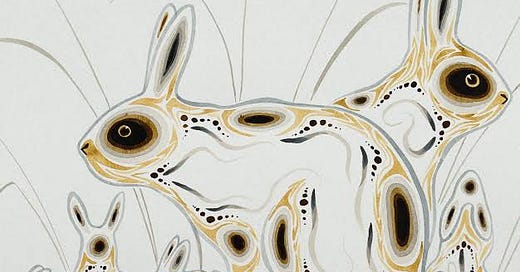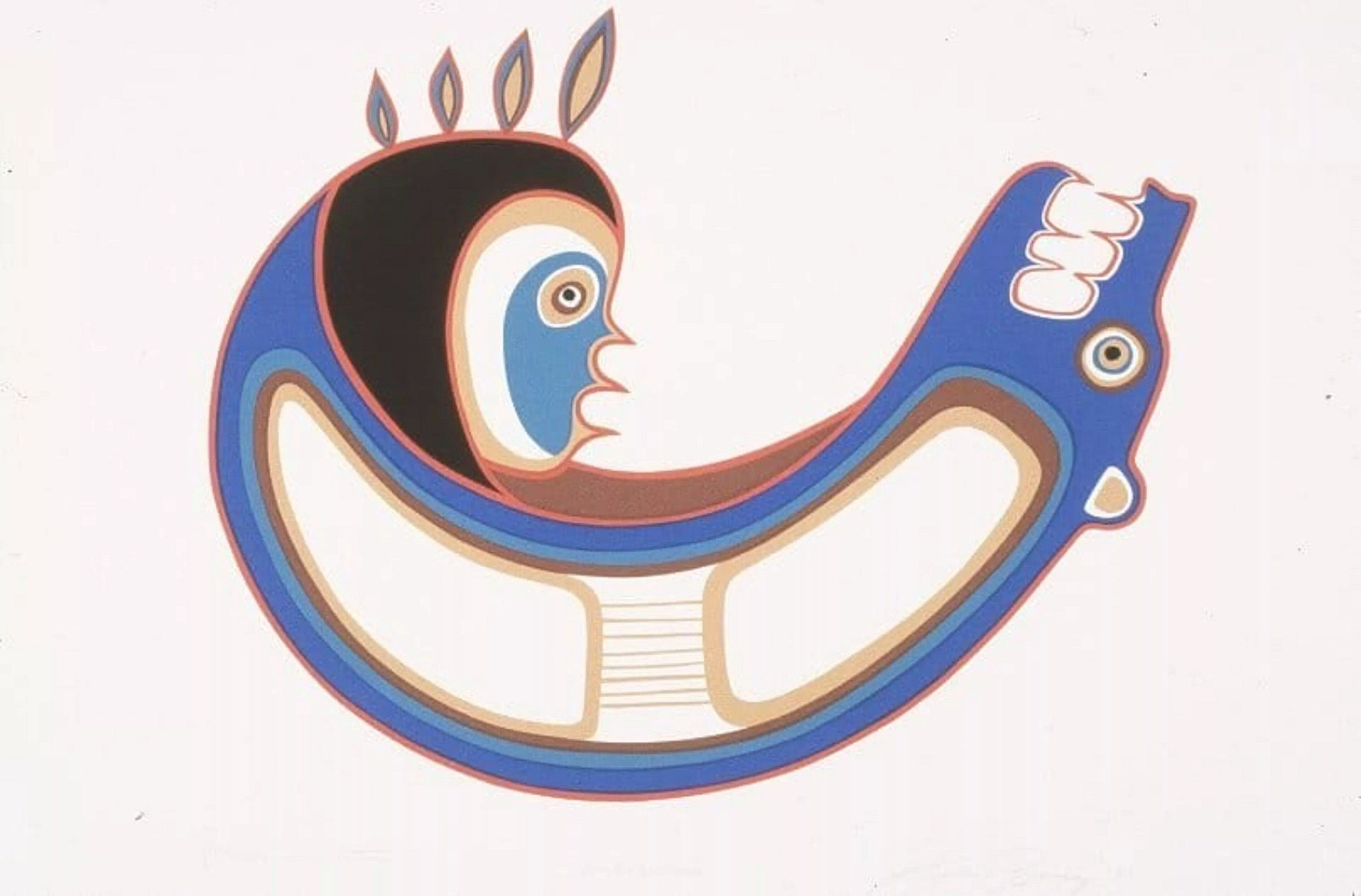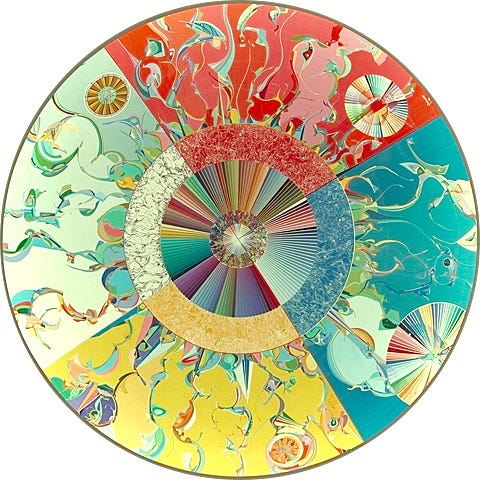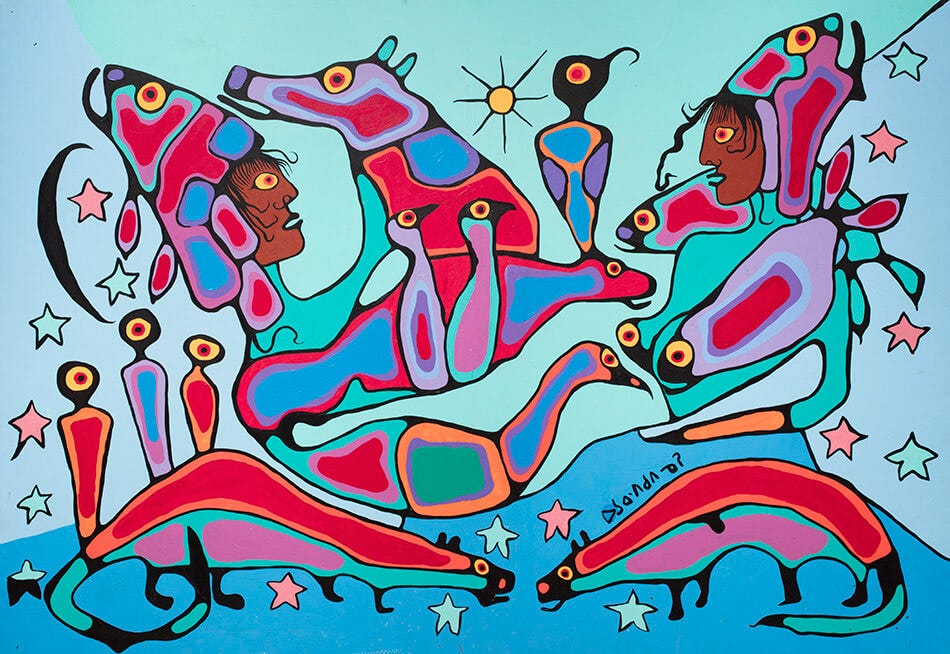Hello friends,
Throughout May, I am showcasing visual artists in Canada. Some well known, others not so much.
Earlier this month, I released a two-part series on the famed Group of Seven and shared a few resources on decolonizing art, including a link to an article about the Indigenous (or Indian) Group of Seven—a group unknown to me until I stumbled across it in my research.
The group, which formed in 1973, calling itself Professional Native Indian Artists Inc. (PNIAI), was among the first independently organized, self-managed Indigenous artists’ collectives in Canada.
Unlike the Group of Seven, members of the PNIAI didn’t share a common approach to making art. Their themes and styles varied, but the artists were united in raising awareness about indigenous art and artists, and advocating for inclusion, recognition, and equal access to art funding for them, inspiring later groups like the Society of Canadian Artists of Native Ancestry and the Aboriginal Curatorial Association.
Let’s sit back, relax, and take a look at four of the founding members and their work. Shall we?
Jackson Beardy, an Oji-Cree artist, was part of the Woodlands School of Indigenous art. His work, which was often painted on canvas, birch bark, and beaver skins, drew from oral traditions and explored the interplay between people and the environment.
When not painting, Beardy taught at Brandon University and the University of Manitoba, and served as a cultural consultant and art advisor to the Manitoba Museum of Man and Nature.
Shown below: Balance in Nature
Eddy Cobiness, an Ojibwe (Anishinaabe) artist, was a founding member of Professional Native Indian Artists Inc., and an eminent painter known for his flowing brush strokes. Throughout his career, he worked to ensure indigenous arts, and artists, were recognized, and valued, by the art world. Of his legacy, he said: “I have met and worked with many talented young artists, who have so much to contribute to the world of visual art. I hope, by setting a good example myself, that someday you will get to know them too.”
Shown below: Rabbit Family
Alex Janvier (Treaty 6 territory) is a world-renowned pioneer of Indigenous Modernist Art. His work, which features vibrant colours and dynamic lines, is held in major museum collections throughout Canada, including the National Gallery of Canada, Canadian Museum of History, Montreal Museum of Fine Arts, and Winnipeg Art Gallery. In 1967, he brought together Indigenous artists such as Norval Morrisseau and Bill Reid for the Indians of Canada Pavilion at the Expo, where he also contributed a mural.
Shown below: Morning Star (Gambeh Then’)
Norval Morrisseau (Anishinaabe), also known as Copper Thunderbird and the Picasso of the North, is considered the Grandfather of contemporary Indigenous art in Canada. “He is heralded as ‘the key figure at the center of an indigenous art movement in Canada’ by the National Chief of the Assembly of First Nations.”
In Morrisseau’s work, we encounter “the legends of his people, the cultural and political tensions between native Canadian and European traditions, his existential struggles, and his deep spirituality and mysticism.”
Shown below: Shaman and Apprentice
Before you go
Would you do me a small favour? If you enjoy reading Sift. Shift. Lift. please take a moment to like, share, or comment below. Thank you.









So good
Amazing pieces.